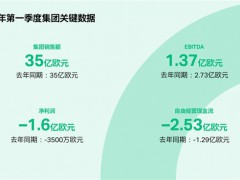據油價網2021年8月14日報道,這是英國石油公司(BP)最近發布的《2021年世界能源統計回顧》系列文章的第四篇文章。 之前的三篇文章概述了今年的《回顧》,對碳排放數據進行了審查,并對石油供需趨勢進行了審視。
今天第四篇文章將深入研究天然氣生產和消費的數據。
直到上世紀80年代,美國一直在全球天然氣生產中占據主導地位,當時美國把領先地位讓給了俄羅斯。 在過去的50年里,中東地區的天然氣產量也在快速增長,并正朝著全球領先的方向發展。
美國的天然氣產量一直在下降,直到2005年水力壓裂熱潮開始提振天然氣產量。 從2005年到2020年,美國的天然氣產量驚人地增長了86%,使美國重新成為全球天然氣生產國中的領頭羊。
天然氣消費量
由于發電廠越來越多地將天然氣作為燃煤發電的替代能源和可再生能源的后備能源,美國的天然氣消費量迅速增長。
天然氣供應的增加和發電廠的改造帶來的凈影響使天然氣成為增長最快的化石燃料。 過去10年,全球天然氣消費量以年均2.9%的速度增長,而石油和煤炭的消費量分別為1.5%和0.9%。
為應對Covid-19大流行,去年美國天然氣產量大幅下降。 唯一可與之相比的下降發生在2008年房地產危機期間,自那之后,天然氣消費增長恢復了正常趨勢。
自1965年以來,美國一直是世界上最大的天然氣消費國。 2020年,除了墨西哥和德國的排名發生了變化外,前10大消費國與2019年完全相同。
天然氣產量
在所有國家中,美國在2011年成為全球天然氣產量的領先者,并在此后大幅增長。去年,由于Covid-19大流行對天然氣價格產生了負面影響,美國的天然氣產量下降了1.9%,但仍占全球產量的23.7%。
去年美國天然氣產量為883億立方英尺/天,高于整個中東地區的天然氣產量(663億立方英尺/天)。前10大天然氣生產國排名與2019年相同。
天然氣出口量
天然氣生產繁榮的另一個結果是某些國家的天然氣出口量大幅增長。 美國通過管道和液化天然氣(LNG)形式的天然氣出口在過去10年里激增。 去年,美國LNG出口量增長至610億立方米。 在2010年,這個數字只有15億立方米。 美國現在是全球第3大LNG出口國,僅次于澳大利亞(1062億立方米)和卡塔爾(1061億立方米)。
美國的管道天然氣出口也大幅增長,過去10年增長了近兩倍,達到了761億立方米。 墨西哥一直是美國管道天然氣出口增長最快的市場,去年美國管道天然氣進口總量為543億立方米。 加拿大是美國管道天然氣出口的另一個重要目的地,為218億立方米。
天然氣儲量
美國可能還會在未來幾年繼續在天然氣生產方面領先世界,但其探明天然氣儲量意味著美國的領先可能是短暫的。
2017年底,中東探明天然氣儲量為2.8千萬億立方英尺,而美國探明天然氣儲量為446萬億立方英尺。從現在來看,美國探明天然氣儲量僅占全球探明天然氣總量的6.7%。
俄羅斯探明天然氣儲量超過其他任何國家,有1.3千萬億立方英尺。
李峻 編譯自 油價網
原文如下:
U.S. Natural Gas Dominance May Be Coming To An End
The is the fourth article in a series on BP’s recently-released Statistical Review of World Energy 2021. Previous articles provided an overview of this year’s Review, an examination of the data on carbon emissions, and a look at oil supply and demand trends.
Today I delve into the data on natural gas production and consumption.
The U.S. had dominated global natural gas production until the 1980s, at which time it ceded the lead to Russia. The Middle East has also grown its natural gas production at a rapid pace over the past 50 years, and was on pace to take the global lead.
Natural gas production had been in decline in the U.S. until the fracking boom that began to boost production in 2005. Production grew in the U.S. by an astounding 86% from 2005 to 2020, which pushed the U.S. back into the global lead among natural gas producers.
Natural Gas Consumption
U.S. consumption has grown rapidly as power plants have turned increasingly to natural gas as both a replacement for coal-fired power and a backup for new renewable capacity.
The net impact of growing natural gas supplies and conversion of power plants has caused natural gas to become the fastest-growing fossil fuel. Over the past decade, global natural gas consumption has grown at an average annual rate of 2.9%, versus 1.5% for oil and 0.9% for coal.
Production fell sharply in 2020 in response to the Covid-19 pandemic. The only comparable decline came during the 2008 housing crisis, after which consumption growth returned to its normal trend.
The U.S. has consistently been the world’s top natural gas consumer since 1965. In 2020, the Top 10 consumers were exactly the same as in 2019, except Mexico and Germany switched positions.
Natural Gas Production
Among all countries, the U.S. moved into the lead for natural gas production in 2011, and has since substantially grown that lead. In 2020, U.S. production declined by 1.9% in response to the Covid-19 pandemic — which negatively impacted gas prices — but the U.S. retained a commanding 23.7% share of global production.
To put U.S. production into perspective, the 88.3 billion cubic feet per day (BCF/d) the U.S. produced in 2020 was greater than all Middle East natural gas production (66.3 BCF/d). The Top 10 producers were the same as in 2019.
Natural Gas Exports
Another result of the boom in natural gas production has been substantial growth in the gas exports of certain countries. U.S. exports, both via pipeline and as liquefied natural gas (LNG), have surged over the past 10 years. U.S. LNG exports grew last year to 61 billion cubic meters (BCM). For perspective, in 2010 that number was 1.5 BCM. The U.S. is now the 3rd largest LNG exporter, behind Australia (106.2 BCM) and Qatar (106.1 BCM).
Pipeline exports from the U.S. have also surged, nearly tripling over the past decade to 76.1 BCM. Mexico has been the largest growth market for pipeline exports, with 54.3 BCM of the total in 2020. Canada was the other destination of U.S. pipeline exports at 21.8 BCM.
Natural Gas Reserves
The U.S. may continue to lead the world in natural gas production for a few more years, but the level of proved natural gas reserves implies that our lead could be short-lived.
The Middle East’s proved natural gas reserves at the end of 2017 were 2.8 quadrillion cubic feet, versus U.S. proved reserves of 446 trillion cubic feet. For perspective, U.S. proved reserves are only 6.7% of the global total.
Russia has more proved natural gas reserves than any other country with 1.3 quadrillion cubic feet.
免責聲明:本網轉載自其它媒體的文章,目的在于弘揚石化精神,傳遞更多石化信息,并不代表本網贊同其觀點和對其真實性負責,在此我們謹向原作者和原媒體致以敬意。如果您認為本站文章侵犯了您的版權,請與我們聯系,我們將第一時間刪除。







